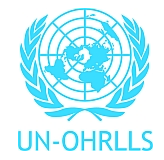Participants discussed how to enhance disaster mitigation and resilience building for the least developed countries (LDCs), Landlocked Developing Countries (LLDCs) and small island developing States (SIDS), during a side event of the UN General Assembly's (UNGA) Second Committee (Economic and Financial), organized by the UN Office of the High Representative for the LDCs, LLDCs and SIDS (OHRLLS).
 30 October 2015: Participants discussed how to enhance disaster mitigation and resilience building for the least developed countries (LDCs), Landlocked Developing Countries (LLDCs) and small island developing States (SIDS), during a side event of the UN General Assembly’s (UNGA) Second Committee (Economic and Financial), organized by the UN Office of the High Representative for the LDCs, LLDCs and SIDS (OHRLLS).
30 October 2015: Participants discussed how to enhance disaster mitigation and resilience building for the least developed countries (LDCs), Landlocked Developing Countries (LLDCs) and small island developing States (SIDS), during a side event of the UN General Assembly’s (UNGA) Second Committee (Economic and Financial), organized by the UN Office of the High Representative for the LDCs, LLDCs and SIDS (OHRLLS).
The event, titled ‘A crisis mitigation and resilience building mechanism for LDCs, LLDCs and SIDS,’ took place on 30 October 2015, in New York, US.
Chantal Uwizera, Second Committee Rapporteur, called for shifting from crisis response to risk reduction. Gyan Chandra Acharya, Under Secretary-General and High Representative for the LDCs, LLDCs and SIDS, highlighted the disproportionate impact of climate change on countries in special situations, and described vulnerability and resilience as two sides of the same coin.
Rakiatou Christelle Kaffa-Jackou, Niger’s Ministry of Foreign Affairs, Cooperation, African Integration, highlighted her country’s challenges of food insecurity, terrorism, and epidemics, and introduced initiatives undertaken nationally such as the establishment of food crisis, disaster management and humanitarian coordination cells. She also outlined actions on water management, land restoration and protection, agriculture and nutrition.
Referring to the earthquake in April 2015 that claimed a half million houses and cost US$7 billion, Swarnim Waglé, formerly of Nepal’s National Planning Commission, remarked that his country is the perfect exhibit of a LLDC that has faced disasters, and called for more emphasis on preventing risks, rather than coping with them. He outlined the need to explore new mechanisms such as the Vaccine Purchase Fund, South-South models of disaster responses based on rapid and unconditional assistance, and the Pacific Catastrophe Risk Assessment and Financing Initiative (PCRAFI), noting that traditional aid mechanisms fail to address systemic risks.
Isaac Anthony, Chief Executive Officer (CEO), Caribbean Catastrophe Risk Insurance Facility (CCRIF SPC), said the Facility provides parametric catastrophe insurance for Caribbean governments, covering hurricanes, earthquakes and excess rainfall. This mechanism is replicable, he said, and could serve as good model for LDCs, LLDCs and SIDS, although it is only one component of a more exhaustive toolkit.
As a lead discussant, Abulkalam Abdul Momen, Chair of LDCs (Bangladesh), said LDCs are suffering the most from climate change impacts without being the polluters, and stressed the need for a crisis mitigation and resilience-building mechanism. He called on OHRLLS to comprehensively study the structure and operational modalities of this mechanism, completing the study during the first quarter of 2016, ahead of the Midterm Review of the Istanbul Programme of Action (IPOA) in Antalya, Turkey, in June 2016.
Mwaba Patricia Kasese-Bota, Chair of LLDCs (Zambia), expressed support for a resilience-building mechanism, and called for long-term solutions to the crisis posed by climate change, desertification and other challenges. She noted that paragraph 65f of the Vienna Programme of Action for LLDCs (VPOA) outlines the need for development partners to support LLDCs in “building resilience, developing capacity to respond effectively to external shocks and addressing their specific supply-side constraints.”
Ahmed Sareer, Chair of the SIDS (Maldives), said disaster risk reduction (DRR) should not be seen in isolation from climate change, and outlined the importance of building resilience and increasing prevention. He called on partners to fulfill existing commitments, and for means of implementation to include adequate, predictable and additional financing.
During the interactive discussion, Ethiopia said transitioning to a climate-resilient economy is not a choice but a necessity, and noted the importance of a global partnership. The EU expressed commitment to play its part in efforts to deal with crisis mitigation and resilience building, noting it was not convinced about creating a crisis mitigation and resilience-building fund as called by the LDCs, but preferred using existing structures. The World Bank said it will increase its climate financing by one third by 2020, and remarked that the Global Facility for Disaster Reduction and Recovery (GFDRR), managed by the Bank, helps address disaster risk. New Zealand called for strengthening traditional knowledge and resilience, and for using local structures before and during crisis responses.
The Second Committee is convening until late November 2015, and its programme of work includes several side events and joint meetings. [IISD RS Sources] [Concept Note] [Meeting Details] [Second Committee Side Event Schedule] [Second Committee Documents]